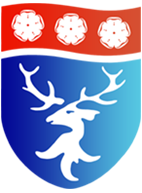Vision
In ICT and Computing we aim to support our students to become active members of a rapidly changing digital world. We develop students’ computational thinking and programming skills to enable them to have a positive approach to a real world problems. Our broad curriculum allows students to develop transferable skills in both ICT and computing, including the ability to program in various languages, and use of a wide range of hardware and software and devices. We encourage our students to challenge themselves to create high quality digital products and take pride in demonstrating their skills and creativity. Our teaching encourages students to consider their digital footprint, the impact of their digital presence and the robustness and accuracy of information found online. We encourage a culture of resilience where learning from failure is the key to success.
Overview
Our Computer Science Curriculum reflects how we can make our curriculum relevant for leading our students into the world with their computing skills and into our KS4 and KS5 courses. We ensure that all students can access each aspect of the curriculum and the skills required within it.
Structuring our courses
Our KS3 curriculum reflects the required skills and techniques students need to be confident and independent in a range of computer systems. Our options offer a range of diverse skills at GCSE by including both Creative iMedia and Computer Science. The courses are so vastly different and the skills within each suit different learners with different aspirations. The skill sets are a mixture of- Learning how to use software and how ICT fits into the real world, Creative ICT, and Technical Programming to develop computational thinkers.
At A Level Computer Science we cater for students who are computational thinkers and hope to progress their computing skills.
The planned curriculum includes a breadth of knowledge relating to computer science, information technology and digital literacy. Declarative knowledge (‘knowing that’) and procedural knowledge (‘knowing how’) are identified, sequenced and connected in the curriculum. Skilful use of technology is underpinned by procedural and declarative knowledge.
